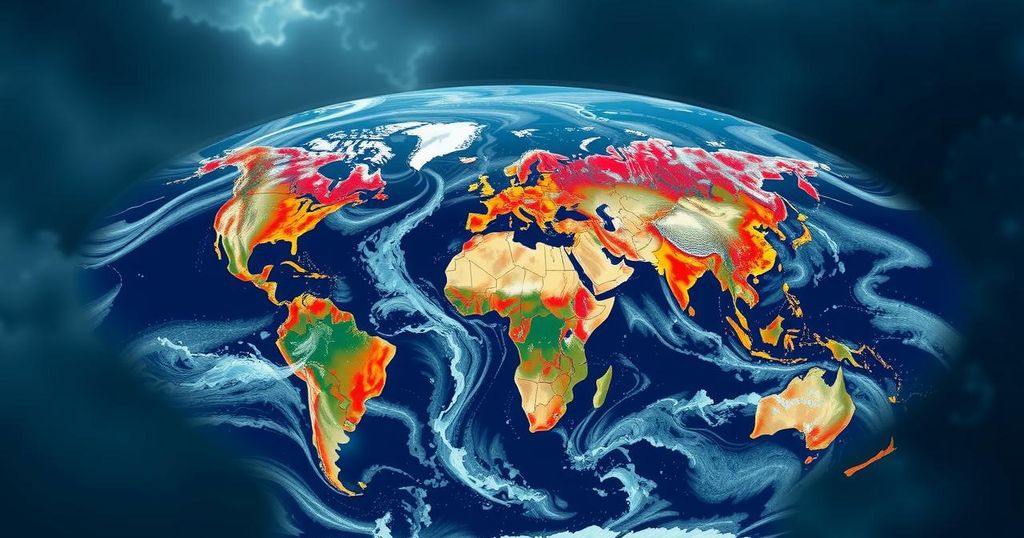The Impact of Climate Change on Extreme Weather: Key Insights from Carbon Brief’s Mapping
Carbon Brief’s extensive map highlights over 600 studies linking climate change to extreme weather, showing 74% of events worsened by human activity. The map details nearly 750 extremes, focusing on heat, flooding, droughts, and more, while addressing disparities in research coverage globally, particularly in the Global North.
A groundbreaking study from 2004 pioneered the attribution of human-induced climate change to extreme weather events, initially examining the devastating 2003 European heatwave that resulted in over 70,000 fatalities. This seminal work laid the foundation for the field of “extreme event attribution,” which assesses the extent to which climate change influences the severity and frequency of extreme weather, thereby yielding a deeper understanding of various phenomena, such as wildfires, droughts, and typhoons around the globe. To systematically track this expanding area of research, Carbon Brief has developed an interactive map that catalogs over 600 studies related to climate change’s influence on approximately 750 extreme weather occurrences. Of the recorded events, a striking 74% were found to be exacerbated by climate change, with many instances being nearly impossible without human influence. Conversely, around 9% of events were identified as less likely to occur due to climate change, predominantly in the context of blizzards and cold weather extremes. This updated iteration of the Carbon Brief map provides a comprehensive overview by categorizing the ways in which climate change has impacted various extreme weather events. Heat-related extremes constitute the majority, followed by rain, flooding, droughts, and storms, indicating a critical trend linking climate change to increasingly severe weather patterns. Carbon Brief’s evidence underscores the growing influence of human activities on weather patterns, particularly through the analysis of case studies such as the Australian bushfires of 2019-2020 and marine heatwaves. Additionally, advances in rapid attribution studies allow for timely responses to new extreme events, showcasing the ability of scientific communities to swiftly communicate the climate impact of such occurrences. Moreover, this research has highlighted the uneven distribution of studied events, with most situated in the Global North, reflecting disparities in weather data accessibility and institutional research focus. However, recent initiatives aim to address these inequalities, as seen in the significant number of attribution studies emerging from China due to recent impactful climate events. Overall, the insights from this compilation of studies emphasize the urgent need for greater understanding and action regarding climate change and its pervasive effects on global weather extremes.
The analysis of climate change’s impact on extreme weather events has gained significant momentum since the early 2000s, primarily following the development of attribution science. This discipline enables researchers to evaluate how much human-induced climate change affects specific weather occurrences. The initial breakthrough study in 2004 represented a transformative moment in climate science, providing the methodology for subsequent studies that have consistently shown a strong correlation between climate change and extreme weather phenomena, ultimately leading to the development of comprehensive databases intended to track, analyze, and visualize these impacts globally.
In conclusion, the findings from Carbon Brief’s interactive map reveal compelling evidence that the majority of studied extreme weather events have been made more severe or likely due to human-induced climate change. The systematic examination of climate attribution studies not only enhances our understanding of weather extremities but also underscores the urgent need to address the consequences of climate change on a global scale. Initiatives to broaden research equity across diverse geographical regions will be crucial in this ongoing fight against environmental degradation.
Original Source: www.carbonbrief.org




Post Comment